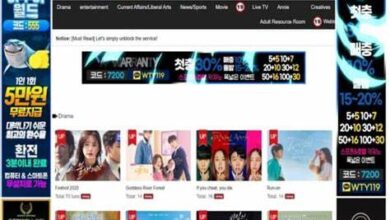How to Choose the Right Charts for Effective Data Storytelling?

When working on complex data sets, your immediate concern should be how you will explore and interpret the results in a visual format. When you want to analyze data and gather insights, you need to incorporate data visualization into the process to identify any available trends and patterns within the data values. After completing the project, you will also need to use data visualization to communicate the results you have collected after analyzing the data.
When presenting data to your market audience, you need to remember that human beings are visually oriented. This means that any data presented in a visual format will likely be consumed by many people within the shortest time possible.
It’s easier for your readers to interpret a bar chart than the data displayed in a spreadsheet. Many people get bored reading data displayed in a spreadsheet, and some end up neglecting it. You can check the chart templates over the internet which help you display your data easily.
Investing in efficient data visualization can greatly contribute to the success of your data needs. You can easily invest lots of your effort in visualizing your data but miss out on the fact that storytelling is key in data presentation.
Storytelling with data examples is an essential aspect you will always need to consider whenever you want to present crucial data elements to your audience. When dealing with data visualization, you will automatically interact with different types of charts and graphs to deliver your intended information.
However, choosing the right chart to utilize in data visualization is one of the major problems that many people tend to experience in their data analysis and representation. Note that there are multiple visualization charts that you need to choose from before you get started. This article offers guidance to help you choose the right charts for effective data visualization.
Analyze the Story You Are Trying to Deliver
The first aspect you need to learn from your data is the story you are trying to deliver to your audience. Find out the reasons why the data was collected and its source. Analyze whether your data was mainly collected to either identify patterns and trends or compare different options within the market. Check if the data outlines distribution or is mainly used to identify the relationship between different variables within the market audience.
In addition, you need to understand the story’s origin and the data you are using. If you get the responses to all these crucial questions, you will be in a better position to identify the best chart type that you can use to present data to your audience. Remember that the context in which the data is displayed plays a huge role in helping the readers understand the message more precisely.
Identify Your Target Audience
You cannot create data without a clear picture of whom you want to present it. The first step is to determine your exact market audience before delivering the information you want. Many people struggle to deliver information because they do not know exactly who they are targeting.
After figuring out the story propelling behind your data, you will be in a better position to identify who your exact audience is. For instance, when you analyze the stock market trends, you will present your Kiosk feedback to the business people.
The key aspect is ensuring you have an in-depth understanding of your data. If you grasp your market audience well, it will be easier to identify the most suitable chart type that suits your data needs. Also, you will understand the best context you can place in the data to ensure that all your readers understand your message. Remember that the goal of using data visualization is to make communication easier.
Analyze the Size of Your Data
The amount of data you have will automatically impact the type of chart that you will choose for your data story. There are some types of charts that are not awesome at accommodating massive amounts of massive amounts of data.
On the other hand, other chart types are good at depicting massive data sizes to communicate essential data elements more precisely. For instance, charts such as pie charts are good at displaying small amounts of data.
If you have a huge volume of data, you can prioritize using a scatter chart to help you outline the information since it has an expansive room that can help you get the ball rolling. Before choosing a chart type for your data storytelling needs, you must first identify the volume of the data before you go ahead to identify the best chart type that suits your needs. Ensure that all the data content is outlined clearly to avoid cluttering.
Evaluate Your Data Type
Data comes in different types and formats. It can be categorized into different groups, such as qualitative, quantitative, continuous, or categorical. Getting to know the type of data you have will help you get to eliminate some chart types from your list of priorities. For instance, if the data you have is continuous in nature, you can eliminate the bar chart from your choices since it’s not a suitable option to use in data presentation.
On the other hand, if your data is categorical in nature, then a bar chart can work well in outlining your data to the readers. It’s obvious that you won’t have to use a line chart when the data you have is categorical. The data type goes hand in hand with your chart type, thus helping in data visualization and presentation.
Evaluate How Different Data Elements Relate to Each other
This is the final section where you need to ask yourself how different data elements relate to each other. Evaluate whether the order of your data is mainly based on particular factors, time, and size. If the data you have is related to each other in any way, then you have to point it out clearly since the choice of chart type depends on the data’s nature. If the data is related to each other, you need to choose a chart type that points out this relationship.
On most occasions, the relationship between the datasets can help you identify the best chart type you can use to present the data. However, this is only possible if you have identified the relationship and can easily spell it out. Once this is done perfectly, you can easily choose the best chart type that suits your storytelling data needs.
Conclusion
Choosing the right chart type for your data storytelling needs greatly impacts the information delivery. However, PPCexpo provide you making the right decision requires you to conduct In-depth research and uncover all the hidden information you need to know to make a good choice. If you manage to cover all the crucial features outlined above, you will be in a better position to make a decision that will enhance all your data storytelling needs.


